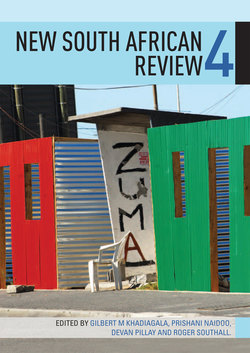Читать книгу New South African Review 4 - Devan Pillay - Страница 16
На сайте Литреса книга снята с продажи.
The crisis of reproduction
ОглавлениеSouth African workers are confronted with a particularly difficult socioeconomic situation, rendering their reproduction costly and difficult. Combined with the casualisation and unemployment crises which they experience in the labour market is an increasing commodification of essential services, from transport to healthcare (Barchiesi 2011). The upshot is that workers require more cash – at the same time as the incomes of many are declining. The ensuing reproduction squeeze often precipitates workers into the arms of very costly providers of consumption credit (Bateman 2012; James 2012). South African wage levels must therefore be understood in the context of a very expensive cost of reproduction due to commodified and often poorly managed services.4 Although some of the poor in South Africa have benefited from increasing conditional cash transfers, the latter typically contribute to entrenching neoliberalism when they are associated with the private provision of services (Ghosh 2011). Moreover, grants are, like micro credits, primarily channelled to purchasing goods provided by large-scale oligopolistic producers (Valodia op.cit.), able to fix prices for certain basic foodstuffs such as bread or poultry (Competition Commission 2010).
A crucial consequence of labour casualisation has been to exacerbate poverty, as the ability of workers to support dependants has been adversely affected.5 In poor households, it is common that workers’ wages are ‘the main safety net … [hence] even the limited income available to low paid workers is eroded through support for the unemployed’ (Coleman forthcoming). The weight of interpersonal solidarity imposed on the poor in South Africa is not limited to wage transfers, but also includes care. Many companies have thus managed, thanks to outsourcing and casualisation, not to bear the costs associated with HIV and AIDS. The economic burden of the disease has been shifted from business onto government, households and individuals, with women paying the highest price of caregiving (Marais 2005). Where contract and casual labour is extensively used, workers’ benefits are nearly absent and the entire cost of healthcare is displaced onto formal and informal caregivers (nurses and especially women of the family of the affected persons). In the context of insufficient investment in public health, access to health services is skewed not only in terms of race and class, but also against rural dwellers. This may explain why South Africa’s labour force participation rate is so low (54.8 per cent in the first quarter of 2013); indeed, many women are prevented from entering the labour market because they are looking after ill family members. Some are supported by NGOs or by new government schemes, but they are paid way below other healthcare professionals. Moreover – and crucially – sick workers who do not have permanent contracts cannot benefit from company-supported medical aid or sick pay.
